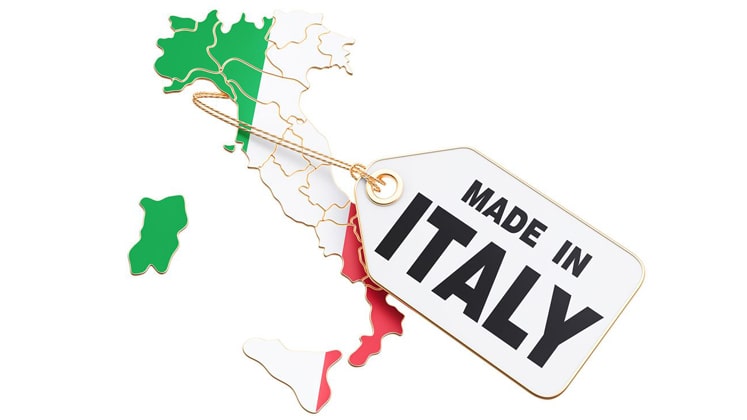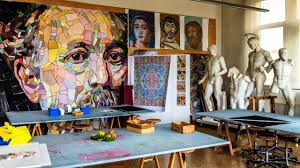Does Made in Italy need to renew itself?

Milan: The quality of Italy’s luxury fashion production is the envy of the world. However, as the industry picks up momentum again after the setbacks of the recent lockdowns due to Covid-19, some voices are highlighting the need for reform and renewal.
“We should be able to open a dialogue to establish rules that apply to the Italian production system, so as to be stronger in front of our clients,” says Andrea Rambaldi, owner of producers FashionArt and president of Gruppo Moda Sport Calzatura of Assindustria Venetocentro -an association bringing together companies that work in fashion.
Rambaldi’s company, which collaborates with some 20 subcontractors and is shortly to open its own production unit, works for a roll call of luxury names including Valentino, Armani, Ferragamo, Chanel, Lanvin and Yves Saint Laurent.
In the region of Veneto, as in other manufacturing regions of Italy, producers are coping with multiple challenges, including higher transport costs, pressure from brands for faster production turnaround, and the need to respond to new sustainable strategies.
The hope, post-lockdown, is that luxury brands work more closely with their artisan production networks to resolve these issues and create a more flexible and better structured supply chain.
The Veneto fashion production system is complex, with the region divided into a series of highly specialised districts including eyewear (Belluno), sportswear (Montebelluna), footwear (Riviera del Brenta) and leather (Vicenza). Some 10,000 companies operate here, employing 73,000 workers. In 2020, the region’s exports amounted to 9 billion euros, down 11 per cent on the year before the pandemic, according to estimates from Unioncamere Veneto (the Veneto chambers of commerce).
Companies have managed to survive: they drew on state aid and some switched to making masks and medical devices. In the first quarter of 2021, orders picked up again. Even if Europe remained in slow motion, China was back in full swing, its consumers hungry for luxury products.
The production model remains fragmented, typical of Made in Italy, relying on highly specialist small-sized companies. To coordinate a production chain, vendors such as Fashion Art play an important role to ensure compliance with deadlines, quality levels and cost controls. They provide a single point of contact for brands with the supply chain.
“It is a time of intense work,” says Rambaldi. “In the period of the [height of the] pandemic we had some cancellations of important orders, but as soon as it was possible we started working again. We have made a pact with our production chain — we collaborate with the artisans to always guarantee flexibility and speed. We have also started working with new brands. It is a very stimulating moment, I hope not just a passing phase.”
One pressing issue for the Italian industry is a lack of skilled workers. “We talk about new technologies and the use of automated systems for the production of garments, but we don’t make standard products. There are things that can only be done by hand,” says Laura Dalla Montà, owner of Confezioni Alice, who produces clothing and prototypes.
Dalla Montà relies on a vendor to procure work for her business and handle the relationship with the brands. “I don’t have the structure to keep up with the management of contracts and specifications with brands,” she explains. “My work is in the factory. For me it is easier to take the order without thinking about the rest.”
Competition from a multitude of Chinese companies in Veneto, which reportedly often cut corners, is fierce. Small Chinese-owned businesses now account for about 35 per cent of total production in the region, according to estimates by Confartigianato Veneto.
The Chinese role in the supply chain is important but raises all sorts of questions. “The Chinese are essential to carrying out certain types of production, of a lower level and standard,” says Giuliano Secco, president of Confartigianato Veneto, the regional association of small businesses. “But despite the controls they continue to work illegally.”
Luxury brands are usually left in the dark, and may not know whether production is sub-contracted out to Chinese firms. The vendor manages the supply chain and can choose to gloss over, or even conceal, some details. Exploitation of Chinese and other foreign workers remains a concern. In July, police in Veneto discovered a network of businesses using foreign workers, including one with poorly treated Pakistanis. Employment practices in the fashion sector have also been questioned.
Why aren’t more young Italians entering the fashion production sector? It’s hard, challenging work, says Laura Dalla Montà. “I cannot find young people to come to work in the company. Many of the women who work here are close to retirement, I don’t know how I will manage to add new staff to the company — there are no young people interested.”
Some Italian businesses are seeking to attract skilled Chinese workers to their companies, while others are looking for closer partnership directly with Chinese firms. “There are Chinese companies led by second-generation entrepreneurs who respect the rules,” says FashionArt’s Rambaldi. “They are still a minority, but they are there.”
More broadly, the Italian companies in Veneto that supply luxury brands would like to improve their relationships with the brands themselves. The goal is to build long-term confidence, creating a win-win situation in which investments in personnel and machinery can be made with assurance.
Right now, with heavy orders to fulfil in double-quick time, that remains something of a dream for artisan businesses such as Laura Dalla Montà’s Confection Alice. “My workers are tired, we have been under pressure for weeks,” she says. “I would like to have the opportunity to reward them, to give them some extra money for their commitment. But if things don’t change, it’s just not possible.”





